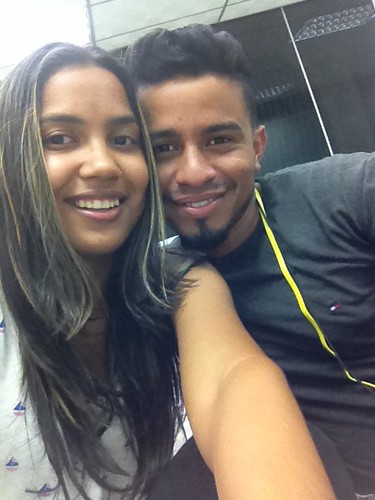Of oneshot, anonymous, sequential Prisoner’s Dilemmas. Half of your time
Of oneshot, anonymous, sequential Prisoner’s Dilemmas. Half of the time the goldstarred men and women went 1st, and could either cooperate or defect very first, and half from the time they went second. All pairing involved one particular high prestige (goldstarred) player and 1 low prestige (nonstarred) player. In spite of the relative weakness of this prestige manipulation, when high prestige players went 1st, they had been copied by low prestige players 45 on the time, while when lowprestige players went 1st they have been only copied by higher prestige players 30 of your time. Having the gold star also produced men and women much more most likely to cooperate, but only when they went very first. Higher prestige players cooperated 55 of your time when they went initial, whereas low prestige players cooperated only 33 in the time after they went very first. By contrast, when the high prestige players went second, they cooperated only 3 with the time (less than low prestige players going either very first or second). These behavioural differences cashed out into large payoff variations in the aggregate: pairs in which the high prestige player went first earned 80 more dollars than did pairs in which the low prestige player went 1st. Such effects look well known to charitable organizations and universities who start their fundraising campaigns by  permitting specifically prestigious individuals to take the lead, and make large contributions. When asked why the university requests permission from significant donors to announce their contributions, the chairman of Johns Hopkins trustees explained, `fundamentally we are all followers. If I can get somebody to become a leader, other individuals will follow. I can leverage that present lots of times over’ [82]. Our modelling strategy contributes to this empirical literature in quite a few methods. Very first, we present an ultimatelevel explanation for why first movers are so highly effective in elevating cooperation even in oneshot anonymous experiments in which neither reputation nor competitive providing can operate. It is unclear how other approaches to leadership clarify these empirical patterns.three Second, our model provides an explanation for why anything like a trivia contest, which bears no resemblance to a social dilemma, could influence cooperation. Finally, our all round framework explains why Like all formalisms in evolutionary biology, our models abstract in the genuine planet in an effort to illuminate a certain set of processes. Future modelling function ought to examine the effects of SPQ cost finite populations, intergroup competitors, repeated interactions within groups and continuous cultural traits (as opposed to our dichotomous `cooperate’ or `defect’) also as the influence of other wellestablished types of cultural learning, for example conformist transmission [83,84] or credibility enhancing displays [85]. In our view, probably the most critical components missing in the models above involve (i) competition among aspiring leaders within a single group, (ii) the capacity of far more prestigious or cooperative leaders to recruit reasonably bigger groups of followers, and (iii) the addition of cultural traits involving costly punishment. Competition among aspiring leaders may, as an example, elevate contributions to entice extra followers, when followers face a decision [32]. Or a tendency to punish noncooperators may well spread amongst followers just like cooperation does, boosting cooperation even additional. PubMed ID:https://www.ncbi.nlm.nih.gov/pubmed/28420967 In future function, we will present detailed models of these dynamics. Authors’ contributions. J.H. conceived the basic thought and.
permitting specifically prestigious individuals to take the lead, and make large contributions. When asked why the university requests permission from significant donors to announce their contributions, the chairman of Johns Hopkins trustees explained, `fundamentally we are all followers. If I can get somebody to become a leader, other individuals will follow. I can leverage that present lots of times over’ [82]. Our modelling strategy contributes to this empirical literature in quite a few methods. Very first, we present an ultimatelevel explanation for why first movers are so highly effective in elevating cooperation even in oneshot anonymous experiments in which neither reputation nor competitive providing can operate. It is unclear how other approaches to leadership clarify these empirical patterns.three Second, our model provides an explanation for why anything like a trivia contest, which bears no resemblance to a social dilemma, could influence cooperation. Finally, our all round framework explains why Like all formalisms in evolutionary biology, our models abstract in the genuine planet in an effort to illuminate a certain set of processes. Future modelling function ought to examine the effects of SPQ cost finite populations, intergroup competitors, repeated interactions within groups and continuous cultural traits (as opposed to our dichotomous `cooperate’ or `defect’) also as the influence of other wellestablished types of cultural learning, for example conformist transmission [83,84] or credibility enhancing displays [85]. In our view, probably the most critical components missing in the models above involve (i) competition among aspiring leaders within a single group, (ii) the capacity of far more prestigious or cooperative leaders to recruit reasonably bigger groups of followers, and (iii) the addition of cultural traits involving costly punishment. Competition among aspiring leaders may, as an example, elevate contributions to entice extra followers, when followers face a decision [32]. Or a tendency to punish noncooperators may well spread amongst followers just like cooperation does, boosting cooperation even additional. PubMed ID:https://www.ncbi.nlm.nih.gov/pubmed/28420967 In future function, we will present detailed models of these dynamics. Authors’ contributions. J.H. conceived the basic thought and.